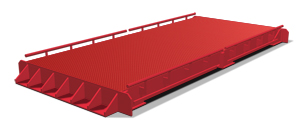Using vehicle scales at a rail freight logistics facility is important for a variety of reasons, including cost savings, safety, and efficiency. Below, we will explore these reasons in more detail.
Rail service has an amazing history of fueling this country’s overall economic growth by moving freight across the country. But if you think about it, rail service isn’t the most popular choice of travel in most folks minds when it comes to their logistics and supply chain optimization strategy.
In addition to railroad track scales, rail logistics service solutions can often benefit from having a 70’x11′ truck scale at their facility. Or perhaps a larger platform such as 80′ x 11′ or even 90′ x 11′ would work better?

Intermodal Travel for Containers or Trailers
Intermodal freight focuses on the best way to send long haul shipments domestically, utilizing both truck and rail to move containers & the traditional 53′ domestic containers that you’ve surely seen on the highways. Basically, in a lot of people’s minds, “intermodal” is the better way to ship, both economically and environmentally, for truckload shipments of 700 miles or more. There are two types of domestic intermodal shipping in container-on-flatcar (COFC) and trailer-on-flatcar (TOFC).
Using truck scales at a rail freight logistics facility can help to save money. Accurate measurement of cargo using vehicle scales allows facilities to optimize the use of railcars and ensure that they are not overloading or underloading them. Overloading railcars can lead to additional costs, such as the need for additional railcars or the need to pay overweight fines. On the other hand, underloading railcars can lead to wasted space and lost revenue. By using scales to accurately measure the weight of cargo, facilities can optimize the use of their railcars and reduce costs. Continue reading
